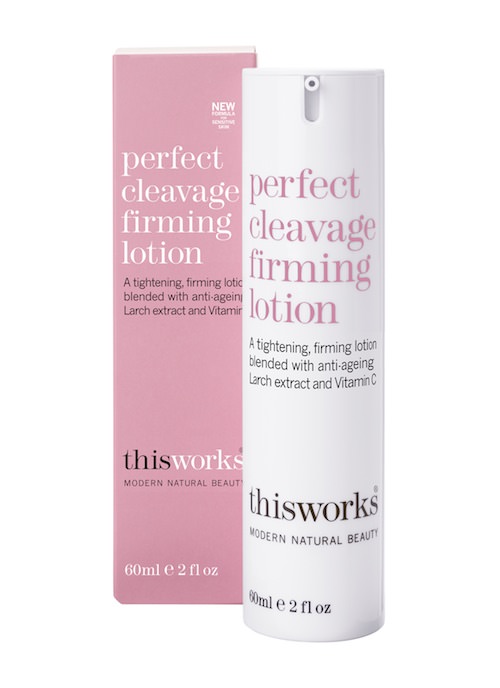Breast Skin Care
Although your skin is constantly shedding and renewing itself, it is really important to look after it to keep looking young and healthy.
Gently exfoliate your body once a week, to remove dead skin and residual dirt, and expose a fresh layer of skin which is vibrant and youthful. Nourish the new skin with a moisturiser rich in vitamin E, to keep it soft and supple.
Keep hydrated overall, for the health of your skin as well as your body and mind, and eat a diet high in antioxidants to neutralise the process of oxidation and cellular damage, which exacerbate signs of ageing. Avoid yo-yo dieting, which not only puts a great strain on your body, but also stretches the skin and tests its elasticity unnecessarily. Stop smoking, as it is not only bad for your health, but will also age your skin prematurely.
You should wear sun protection on exposed skin throughout the year, to protect your skin from sun damage even on an overcast day. This can be easily done by using a face and hand moisturiser with a minimum SPF 15; extend this ritual to include your chest when wearing an open-necked top unless your bust cream also contains sun protection.
This is sensible general skin advice, but the thin layer covering your breasts is particularly delicate and can age quickly if not looked after properly. Use specialist bust creams – see our reviews for the one to suit you – to keep your décolletage beautiful for years to come. Despite your best intentions, however, there are still a number of complaints which can affect breast skin – here are some common problems, along with suggested solutions.
Stretch marks
When your body grows extensively and quickly, the middle layer of skin does not have a chance to keep up, so it breaks in places. Where this happens, the deeper layers of skin show through, forming unsightly stretch marks. For breasts, this is a common result of sudden growth during puberty and pregnancy, but can also occur with rapid weight gain.
Moisturising your skin daily and staying hydrated keeps your skin supple, and can reduce the effects of stretch marks. Knowing that you are likely to grow during pregnancy you can help prevent the problem by massaging your skin with a nourishing moisturiser, rich in vitamin E. If you already have stretch marks, you might find that more recent red lines improve with the application of scar reduction creams, but sadly older pale pink marks are less likely to be reduced.
We recommend Palmer’s Cocoa Butter Bust Cream and Love Boo Bosom Buddy.
Acne
It’s not a major health worry, but breast acne – inflamed pimples, blackheads and whiteheads – is as emotionally distressing as the facial variety. It is reasonably common, particularly on larger breasts, and can be caused by fine ingrown hairs on the chest, hormonal fluctuations during menstruation and pregnancy, certain steroids and mood-stabilising drugs, excessive perspiration, poor hygiene or exposure to pollution.
Avoid sports bras which don’t allow your skin to breathe, shower regularly, especially after perspiring, and use a gentle exfoliation on your chest to remove dirt and dead skin. Dry yourself thoroughly, and treat breast acne with natural antiseptics like tea tree oil, or medicated acne pads by Clearasil and Stridex, before soothing any sores with aloe vera gel.
Rashes
Your breast skin can get a rash just the same as any other part of your body. In fact, your upper chest is more likely to suffer from heat rash and sunburn as it can be left exposed to the sun without protection, while the underside is likely to pick up a fungal rash or yeast infection as it is a perfect warm moist place for spores. Psoriasis, dermatitis and eczema can also all affect the breast, while a sweat rash can be a regular issue for ladies who have a large chest or are obese.
Treat rashes on your chest the same as you would anywhere else on your body: keep the area clean, and free from sweat and dirt, avoid scratching and apply a relevant topical medication. Monitor it for a few days and if it doesn’t start to heal or respond to cream, visit your doctor for a second opinion as there are some rare cancers which first present as a rash.
Sore nipples
There are a number of reasons that nipples can become sore and cracked or itchy, the most common being breastfeeding and jogger’s nipple, caused by friction during exercise. There are a variety of over-the-counter balms and lotions to ease dry painful skin associated with these conditions, but if medications don’t resolve the problem, visit your doctor as eczema of the nipple can in fact be Paget’s disease, which is a form of cancer.
Other changes
If you notice any other changes to the appearance or feel of your breasts during your monthly self-examination, such as puckering or dimpling of the skin, ulcers, discharge from the nipple, or lumps in the breast or surrounding tissue, be sure to take action quickly and see a doctor. It might be nothing, but anything that is caught early is more easily treated.
Latest Cream Review
Browse Categories
Most popular
Dr. Organic Moroccan Argan Oil Breast Firming Cream Review
Dr. Ceuticals Bust Boost Review
UK beaches uncovered: The topless top five
Palmer’s Cocoa Butter Bust Cream Review
The politics of breasts: Know your rights
Strapless, backless or plunging – bra solutions for every dress dilemma
Nutrition and lifestyle for breast cancer prevention


